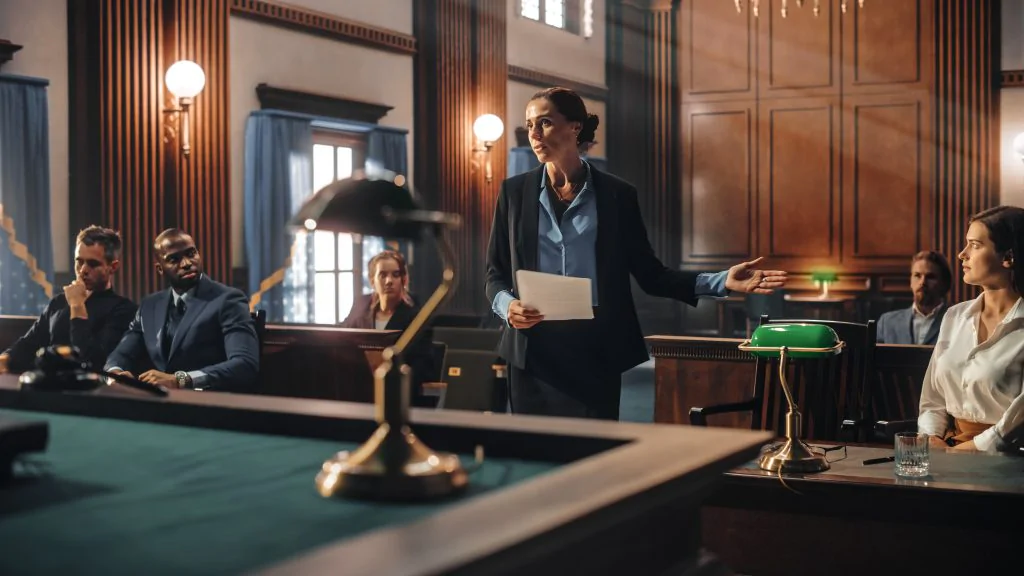As the largest joint in the body, knee damage is painful, limits mobility and typically results in a slow recovery. Recovery may involve hospitalization, long stays in a rehabilitation facility, or in-home care. Knee injuries often mean an interruption to work, driving, and normal life for weeks, months, or even years.
Common Knee Injuries and Treatments
The knee functions due to a complex makeup of different bones and ligaments. The many moving parts that enable a knee to function in different ways also make it highly susceptible to injury. A small issue with a single ligament can prevent the whole knee from working properly. Most knee injuries fall under one of the following:
Ligament tears:
- ACL (anterior cruciate ligament)
- PCL (posterior cruciate ligament)
- MCL (medial cruciate ligament)
A ligament is torn after impact from a sudden force or change of direction. A torn ligament induces severe pain, swelling and instability of the knee. Treatment often requires surgery to regain function. ACL tears are particularly common. The average cost for ACL reconstruction in New York ranges from $13,500.00 in the Hudson Valley to $17,400.00 in NYC. Full recovery is generally a 6 month process.
Torn meniscus:
The meniscus is a small piece of cartilage that cushions the knee joint. Damage to the meniscus can result in pain, swelling, and limited mobility. Only severe tears to the meniscus require surgery, but it won’t heal by itself. Most of these injuries respond well to about six weeks of physical therapy and non-invasive treatments. The average price for one physical therapy session in New York varies from $50-$150 without insurance.
Fractures: The three bones that make up the knee are the femur (the thigh bone), the tibia (the shin) and the patella (the kneecap). Enough force can cause breakage to any bone, causing severe pain, swelling, and loss of mobility.
Less-severe fractures can heal on their own in a cast or splint after several weeks or months. Severe fractures often require surgery to properly reset the bones. In any case, an extensive physical therapy program is necessary for strengthening the joint and restoring its range of motion.
Dislocations:
A kneecap dislocation can be a sudden or chronic, recurring injury. Dislocations are often caused by a sudden change in direction. Chronic dislocations occur when the knee dislocates due to natural alignment in the body. Range of motion is limited, and there is a visible protrusion that causes severe pain and swelling. Some dislocations can heal on their own with a brace until swelling subsides, but other cases of repeated dislocation may require surgery.
Tendon Tears:
Tendons connect muscles to bones, allowing the leg to extend and flex. Tendons are most often damaged after falling and landing roughly. Partial tears are sometimes treated conservatively with braces alone. Complete tears require surgery to be repaired.
Lasting Consequences of Knee Damage
After suffering a traumatic knee injury, it’s possible lasting damage will occur. Though treatments are available, damaged knees sometimes never return to the way they were.
Knee injuries are especially detrimental to older adults with weaker joints from years of wear and tear and cartilage loss. Permanent consequences for a traumatic knee injury include but aren’t limited to:
- Chronic Pain: Ongoing pain can be treated with medication, but sometimes this treatment is inadequate. It can be frustrating to only be able to subdue symptoms and unable to fix the cause of discomfort. Medication can also be habit-forming and lead to more serious problems.
- Functional Limitations: Knee injuries impact athletes and those who frequently exercise, but it also can affect regular daily activities. For example, knee injuries can impact someone’s ability to use a staircase as normal.
- Decreased Range of Motion: A full range of motion is necessary for walking, running, kicking, and sitting comfortably. Decreased range of motion can occur from the injury itself or a lack of appropriate rehabilitation after surgery. The average person should be able to extend and bend their legs through a range of about 130 degrees. Studies have shown that a reduction in range by as little as three to five degrees correlates with increased pain and patient dissatisfaction after surgery.
- Post-Traumatic Osteoarthritis: Arthritis is a common permanent consequence for any joint injury. It can be treated, but not completely cured. Trauma accelerates the deterioration of joint cartilage, which acts as a cushion for the knee bones. Again, this is a particularly detrimental consequence to older adults as the ability of cartilage to heal itself decreases with age. Osteoarthritis is one of the leading causes of disability. Further, someone with knee trauma is three to six times more likely than someone without this trauma to develop osteoarthritis. Knee injuries always have the potential to be a long-term problem.
Legal Options After a Knee Injury
It’s important to know one’s legal rights after sustaining a knee injury after a traumatic event. There are different options available for making a claim depending on the details surrounding the injury. The statute of limitations for personal injury claims in New York is three years. This gives victims three years from the date of their injury to begin taking legal action.
Slip and Fall Knee Injuries
If a knee injury was caused from slipping and falling on someone else’s property, the property owner or manager could be held liable. New York’s premise liability laws require business owners to maintain reasonably safe premises for anyone who legally enters their property. Hazardous walkways and dangerous conditions can cause a person to slip and fall victim to knee injuries.
Filing a claim based on premise liability requires proving that the owner knew or should have known about an unsafe condition that caused the injury. This is just one of many reasons to consult an experienced slip and fall injury attorney to build a strong case.
New York also exercises a comparative negligence rule, which determines compensation based on how much the victim is at fault for their own accident. Property owners will use this rule to defend themselves and attempt to prove the victim was at least partly responsible for their injury, decreasing compensation values.
Slip and fall knee injury settlements have a range of from five to six figures. Compensation is determined by variables such as:
- The county where the fall took place
- The total cost of medical expenses
- The amount of lost income due to the injury
- The degree of pain and suffering endured
Knee Injuries from Car Accidents
Car accident victims often sustain knee injuries due to the sudden force applied to the victim’s legs. Accidents can happen for any number of reasons but are obviously more likely to occur when traffic laws are violated. Speeding, driving under the influence, failure to yield, and distracted driving are just a few examples of negligent behavior.
After a car accident, one may be able to seek compensation from the at-fault driver’s insurance company. New York’s mandatory no-fault insurance policy ensures than insurance companies of all parties involved in an accident pay some part of personal injury damages, despite who is at fault. Filing a personal injury case can help prove one’s innocence, while helping to pay for other damages not covered by no-fault policies.
Knee Injuries on the Job
Knee injuries are often caused in part by overuse or repetitive stress. Occupations such as construction work, auto mechanic, carpenter or any job that requires kneeling or heavy lifting pose the highest risk for knee injuries. Accidents also occur due to slipping and tripping over equipment or other hazardous conditions.
New York worker’s compensation laws protect workers who were hurt on the job. If an employee is injured on the job,, they can collect worker’s compensation benefits without needing to prove negligence. However, employees can file a personal injury claim against an employer or a third party while collecting worker’s compensation benefits if a worker can prove an employer’s negligence contributed to the injury. Contractors, building owners and defective products are examples of potentially liable third parties.
Possible Cases of Medical Malpractice
Improper medical care can result in chronic pain and a compromised lifestyle. Cases of medical malpractice resulting in knee injuries include:
- Failure to accurately diagnose and/or treat arthritis
- Inadequate joint replacement surgery
- Use of faulty materials in knee repairment surgery
- Knee surgery malpractice settlements require proving negligence by a healthcare provider, hospital, clinic, or other treatment facility. Not only can medical malpractice result in potentially life-altering consequences for an individual, but it also presents a danger to all patients under the negligent doctor’s care. The statute of limitations for medical malpractice in New York is two years and 6 months. This means victims have 2.5 years from the injury—or when the malpractice was first detected—to start taking legal action.
Knee Injury Compensation
To win compensation for a knee injury in a personal injury case, the following must be proven:
- The person responsible for the injury had a responsibility to exercise reasonable caution on behalf of the public or workplace
- The person neglected that responsibility through negligent actions
- The person’s negligent actions resulted in a knee injury
- Losses were endured as a direct result of an injury
Various damages that can be possibly recovered from a knee injury are:
- Medical expenses including the cost of hospitalization and medication, ambulatory services, emergency room visits, required devices such as knee braces or other equipment
- Rehabilitation such as physical therapy. Many insurance policies don’t fully cover physical therapy for as long as individuals actually require it. Many patients end up paying for these services out of pocket
- Lost wages due to the inability to work, including any future loss of wages if an injury is debilitating enough to prevent one from earning income
- Pain and suffering related to any physical pain or emotional damages brought on by an injury, including any future suffering. Knee injuries are particularly debilitating to our way of life as humans on the go. Having a knee that is unable to function as normal can be severely distressing for a person in any circumstance. Compensation may be gained for any permanent conditions sustained from an injury such as lack of flexibility or chronic pain.
- Disability, which also refers to permanent conditions such as the inability to walk or requiring a wheelchair.
Contact a Knee Injury Lawyer
In an instant, a knee injury can change your life forever. The attorneys at Sobo and Sobo will fight to help you obtain full compensation for your injuries. With decades of experience helping victims of negligence, you can rest assured that protecting your rights is our priority.
We serve victims across the Hudson Valley and New York City with offices located in Middletown, Newburgh, Spring Valley, Poughkeepsie and NYC. Contact us online or call 855-GOT-SOBO today.




